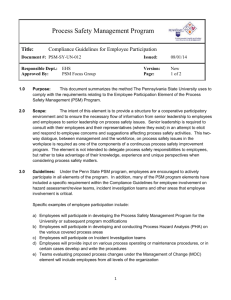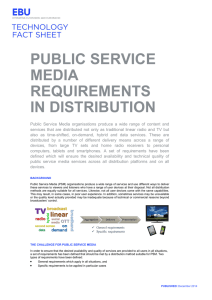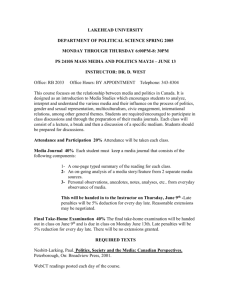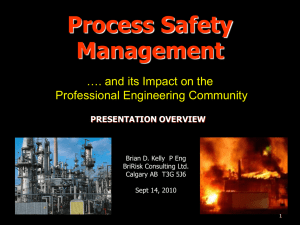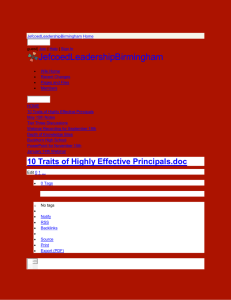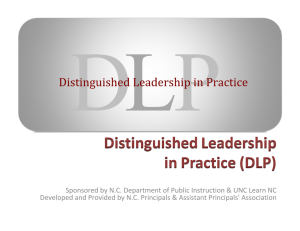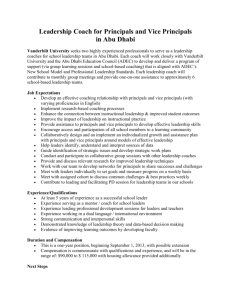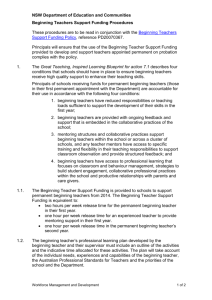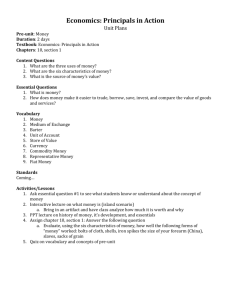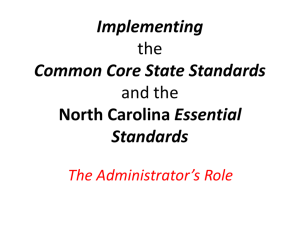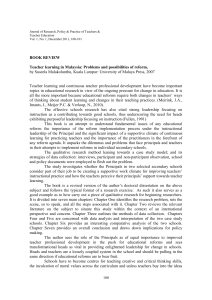Session 1 - Introduction
advertisement
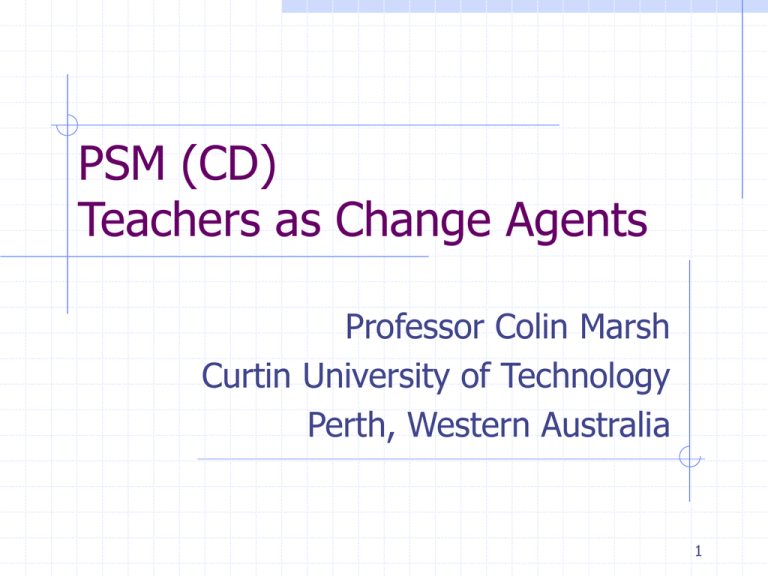
PSM (CD) Teachers as Change Agents Professor Colin Marsh Curtin University of Technology Perth, Western Australia 1 Session 1 Introduction 2 What is the curriculum? Content A set of materials A syllabus Outcomes statements Learning packages 3 What is curriculum change? Curriculum change is multi-dimensional and involves possible changes in goals, skills, philosophy and behaviour, but above all, change in practice. 4 Who are change agents? School principals, vice principals, panel heads PSM (CD) teachers Teachers within the school Visiting teachers from other schools Specialists from universities Media personnel Professional associations 5 Change agents interact directly (face-to-face with individuals or groups) communicate indirectly (via memo’s, newsletters, materials) 6 When I am involved in change I feel like I am a: coach guide director of a play potter person negotiating a swamp whitewater rafter person all at sea person going up a down escalator I feel like I am a: 7 In any school the impact of different change agents will vary. Give a rating of High (H) Medium (M) Low (L) to the impact of the following in your school in bringing about curriculum change: Principal Vice Principals Panel Heads PSM (CD) teacher(s) Very experienced teachers Parents School Foundation Chair H M L 8 Some myths about producing curriculum change All that is needed is a dynamic leader Change will only work if every teacher approves of it Change is a one-off, linear process Change will be accepted if arguments are logical Change is an event (and not a process) There is a set procedure for change which always works All that you need is a “teacher proof” curriculum and it will be implemented exactly as intended 9 Two major elements of curriculum that can be changed Learning Programs learning outcomes/objectives content teaching and learning strategies resources sequencing of learning learning locations modes of instruction assessment and evaluation 10 Learning Milieu (School Climate) culture of school administrative procedures leadership roles and responsibilities communication systems staff evaluations resource distribution document and statistic keeping approaches to monitoring performance 11 Research on the dynamics of change 1. Is uncertain – Things never go completely as 2. 3. 4. 5. 6. predicted Operates in phases – When they are ready for a phase Is cyclical not linear Is composed of a mix of factors – some you can control, some you can’t Each change action sets off a chain of repercussions – intended and unintended Change agent has to ‘read’ the situation and ‘match’ the best possible responses (Scott 1999) 12 External factors that can affect curriculum change Politicians announcements Education & Manpower Bureau frameworks Government allocation of resources High stakes testing and examinations Lobby groups Mass media 13

